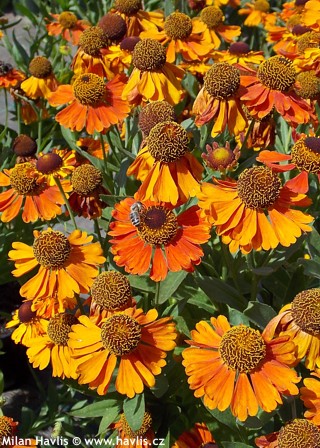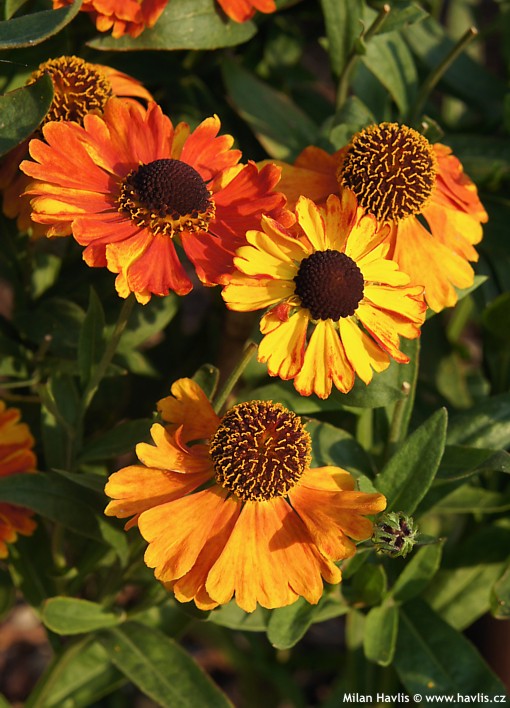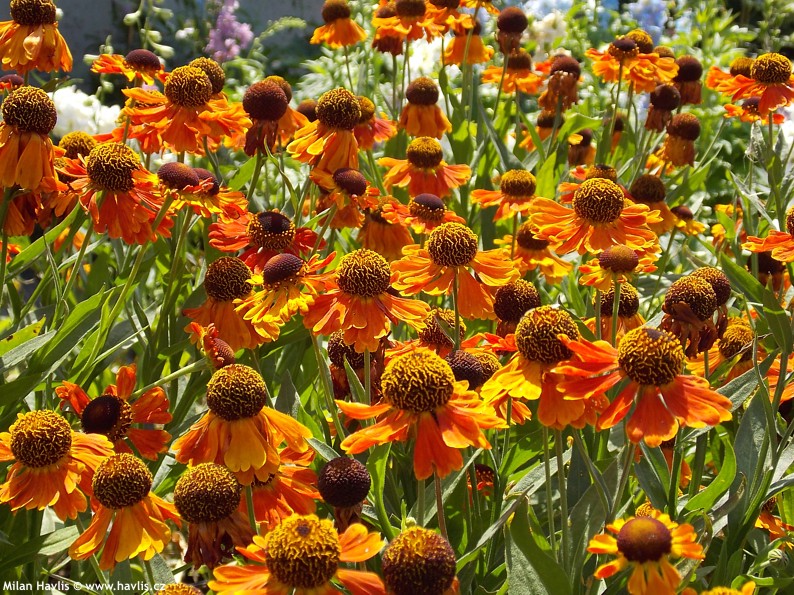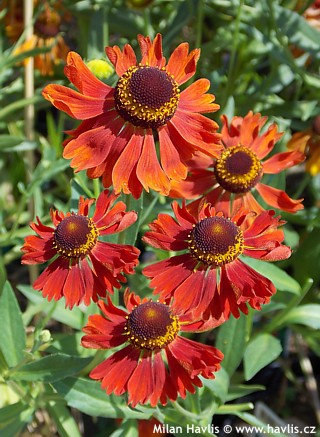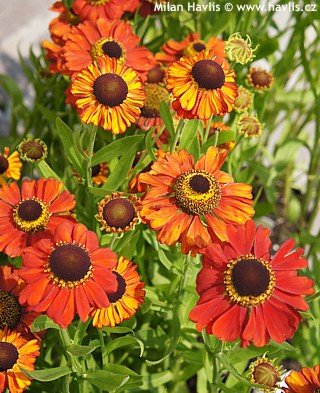Helenium 'SAHIN'S EARLY FLOWERER' Helen's flower, sneezeweed
size/type
mid-sized perennial,mid-sized perennial
usual height
0,6-0,8m
usual width
0,3-0,5m
leaves
deciduous broadleaf
colour of leaves
flowers
showy
colour of flowers
blooming time
June-October
location
full sun
USDA zone (lowest)
4 (down to -34°C)
winter protection
for zone 5+6

for zone 7

categorized
Description of the plant:
Sahin’s Early Flowerer sneezeweed is an early variety of this perennial commonly known to be a flowering item of late summer and early autumn. This variety begins to open its rounded flower buds already in June, and offers a stunning show of richly coloured flowers with warm shades of orange, golden, copper-red, and even crimson. The centres are chocolate brown with golden marks and look so delicious they make you want to eat them. We can’t but bees love them and never want to leave them. I often wondered what the honey from these chocolate heads is like …Sahin’s Early Flowerer is a gorgeous sneezeweed that looks like stolen from a Monet’s painting ‚The Road Bridge at Argenteuil‘. It was bred in Holland as a cross between helenium autumnale and helenium bigelovii, and was made available on the market since 1997.
The leaves are inversely lance-shaped, narrow and medium green. They are present all the way up along the fragile-looking but sturdy stems, too. It is usually suggested to cut back the whole plant in midsummer to encourage new growth and repeated flowering in September and October. However, we achieved the same just using a good fertilizer high in phosphorus without having to remove a single stem.
It will grow in almost soil type but prefers fertile, reasonably drained soil and full sun. Sneezeweed is not drought tolerant and its robust body requires sufficient moisture. So if you plant to grow them in a dry location regular irrigation will be required. On the other hand, it can take slightly water-logged sites where it will grow taller than its given height but will be richer in flowering and with more handsome foliage. It is recommended to divide the clumps every 2-4 years to encourage formation of new roots and production of young plants. All parts of the plant may cause severe discomfort if eaten. Fully hardy to about -34°C (USDA zone 4).
Last update 01-09-2013
QUICK PRICE OVERVIEW
CURRENTLY SOLD OUT












